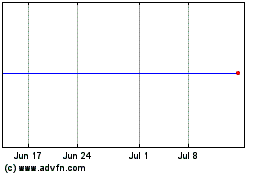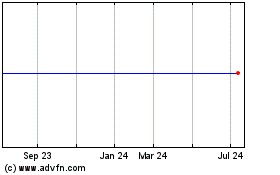Positive Phase III results to be presented
for LAMA/LABA PT003 in COPD
AstraZeneca will present 33 abstracts from across the
respiratory disease portfolio at the 2015 European Respiratory
Society (ERS) meeting in Amsterdam, Netherlands, 26-30 September.
Data will include results from AstraZeneca’s growing inhaled
portfolio of LAMA/LABA therapies, as well as findings from the
company’s biologics pipeline and early science programs.
Maarten Kraan, Vice President, Respiratory, Inflammation and
Autoimmune Therapy Area, said: “The data presented at ERS further
demonstrate the diversity of AstraZeneca’s portfolio of innovative
formulations and devices which provide physicians with the
opportunity to select the right therapy to meet their patients’
needs today and in the future.”
Data from growing inhaled respiratory portfolio reinforce
importance of delivering combination therapies in a single
device
Among key abstracts being presented at ERS are the positive
Phase III safety and efficacy data for PT003, the investigational
therapy combining glycopyrrolate and formoterol fumarate in a
pressurized metered dose inhaler (pMDI).
The two pivotal 24 week studies, PINNACLE-1 and PINNACLE-2,
investigated the potential of PT003 to improve lung function in
patients with Chronic Obstructive Pulmonary Disease (COPD) and
showed that the investigational therapy had positive effects on
both co-primary and secondary endpoints. There were no unexpected
safety findings, with adverse events being consistent with previous
results from the development program [#PA4363, Tuesday 29
September, 12:50-14:40 CET].
Colin Reisner, Head of Clinical, Respiratory Global Medicines at
AstraZeneca, said: “These positive data demonstrate the important
role of dual bronchodilators as a treatment for managing COPD. They
further support our global regulatory submissions for the first
LAMA/LABA combination to be delivered in a pMDI using our unique
co-suspension technology.”
Other key data to be presented from the company’s EU inhaled
COPD portfolio includes a study assessing the efficacy and safety
of Duaklir Genuair (aclidinium bromide/formoterol fumarate),
AstraZeneca’s fixed-dose combination LAMA/LABA therapy. The study
assessed morning and night-time symptom prevalence in COPD and the
efficacy of aclidinium bromide/formoterol fumarate in symptomatic
versus asymptomatic patients [#OA1968, Monday 28 September,
10:45-12:45 CET].
Data highlights from the company’s biologics portfolio show
progress in the application of targeted approaches for future
respiratory care
Study evaluating the effect of tralokinumab on serum periostin
and Immunoglobin E (IgE) levels in uncontrolled severe asthma
[#OA1770, Monday 28 September, 08:30-10:30 CET].
- Serum periostin has been proposed as a
surrogate biomarker for activation of the IL-13 pathway in the
lung. The reduction of serum periostin by tralokinumab in subjects
with severe uncontrolled asthma further supports this concept.
- IgE contributes to the signs and
symptoms of asthma and IL-13 induces B cells to produce IgE. The
reduction of IgE levels by tralokinumab may help explain its
mechanism of action in reducing exacerbations and improving asthma
control and asthma-related quality of life that were observed in a
subgroup of patients in the Phase IIb trial.
- Both findings will be explored further
in the ongoing STRATOS Phase III trials.
Highlights from AstraZeneca’s early respiratory portfolio to
be presented include:
Data on the company’s inhaled p38 inhibitor (AZD7624), aimed
at delivering a broad anti-inflammatory effect in COPD
patients [#PA3904, Tuesday 29 September, 12:50-14:40 CET; #PA3950,
Tuesday 29 September, 12:50-14:40 CET, and #OA483, Sunday 27
September, 10:45-12:45 CET].
The complete list of AstraZeneca data presentations can be
accessed on the ERS website here.
– ENDS –
NOTES TO EDITORS
About PT003 (glycopyrrolate/formoterol fumarate)
PT003 is under investigation as a twice-daily fixed-dose
combination of glycopyrrolate, a long-acting muscarinic antagonist
(LAMA) and formoterol fumarate, a long-acting beta-2 agonist
(LABA). PT003 would be the first LAMA/LABA combination to be
delivered in a pressurized metered dose inhaler (pMDI) using the
unique porous particle Co-Suspension Technology.
About the PINNACLE Phase III Pivotal Studies
The PT003 Phase III pivotal program consists of PINNACLE-1,
PINNACLE-2, and an extension study, PINNACLE-3. Overall the Phase
III pivotal program enrolled over 3,700 patients with COPD at over
275 study sites.
PINNACLE-1 and PINNACLE-2 were Phase III randomized,
double-blind, multi-center, placebo-controlled studies. In both
studies, the efficacy and safety of PT003 administered twice daily
via pressurized metered dose inhaler (pMDI) was compared to its
monotherapy components: glycopyrrolate (PT001), a LAMA, and
formoterol fumarate (PT005), a LABA, and placebo. PT001 and PT005
were also compared to placebo. In PINNACLE-1, open-label tiotropium
was included as an active control. Both studies were conducted over
24 weeks in subjects with moderate to very severe COPD.
The primary objective of both studies was improvement in lung
function as assessed by change from baseline in trough FEV1.
PINNACLE-3 was a multi-center, randomized, double-blind,
parallel-group, chronic dosing, active-controlled, 28-week safety
extension study of the two pivotal 24-week studies (PINNACLE-1 and
PINNACLE-2). It was designed to evaluate the long-term safety,
tolerability, and efficacy of PT003 administered twice daily via
pMDI compared to PT001 and PT005 in patients with moderate to very
severe COPD over a total observation period of 52 weeks. Open-label
tiotropium served as the active control.
The successful completion of the PINNACLE studies marks the
first Phase III outcomes from a series of pipeline candidates under
development by AstraZeneca using Pearl’s novel technology. The
top-line results from the PINNACLE-1 and PINNACLE-2 studies were
announced on 18 March, 2015.
About tralokinumab
Tralokinumab is a human IgG4 monoclonal antibody that targets
IL-13, a key cytokine that is believed to play a key role in the
pathogenesis of asthma through the promotion of inflammation,
airway hyper-responsiveness, mucus hyper-secretion, airway
remodelling via fibrosis, increased IgE synthesis and mast cell
activation. Tralokinumab is currently in Phase III trials for
severe asthma and in Phase II trials for atopic dermatitis.
About Asthma
Asthma is a chronic inflammatory disorder of the airways in
which the bronchi are reversibly narrowed. It affects people of all
ages and is a significant source of morbidity and mortality
worldwide causing an estimated 250,000 deaths per year. Asthma can
be allergic (induced by an immune response to inhaled allergens
such as pollen, fungal spores or dust mite particles) or
non-allergic (induced by exercise, cough, viral respiratory
infection, or inhalation of smoke or chemicals in the workplace).
The airway narrowing characteristic of asthma is a response of the
immune system to the asthma trigger.
Severe persistent asthma is classified by the frequency of
symptoms throughout the day and night, use of reliever inhalers,
interference with daily activities, peak flow readings and whether
asthma exacerbations require use of oral systemic corticosteroids
more than twice a year. Asthma treatment usually includes inhaled
corticosteroids that reduce inflammation of the airways to prevent
asthma symptoms and exacerbations, combined with long-acting
β2-agonist bronchodilators and a short-acting β2-agonist or other
bronchodilator for relief.
About COPD
COPD (chronic obstructive pulmonary disease) is a progressive
disease associated mainly with tobacco smoking, air pollution or
occupational exposure, which can cause obstruction of airflow in
the lungs resulting in debilitating bouts of breathlessness. It
affects an estimated 300 million people worldwide and is predicted
to be the third leading cause of death by 2030. Improving lung
function and managing daily symptoms such as breathlessness are
important to the management of COPD. It is estimated that eight out
of 10 patients suffer symptoms at night, such as an irritative
cough and difficulty breathing, frequent nocturnal awakenings,
which leads to insomnia, worry and anxiety.
About AstraZeneca in Respiratory Disease
AstraZeneca has a long heritage in respiratory disease with 40
years of experience and a strong franchise of marketed products.
Our efforts to find ground-breaking medicines and to develop new
technologies are underpinned by a deep understanding of the biology
of respiratory diseases and our extensive experience in primary
care medicine.
Our strategy is to deliver a range of novel combinations, new
devices, and innovative product offerings to treat respiratory
diseases, including asthma, chronic obstructive pulmonary disease
(COPD) and idiopathic pulmonary fibrosis (IPF). Our innovative
precision approaches will ensure the right treatment for the right
patient.
About Pearl Therapeutics
Pearl Therapeutics is a wholly owned subsidiary of AstraZeneca,
following its acquisition in 2013. The company is focused on
developing inhaled combination therapies for the treatment of
highly prevalent respiratory diseases, including COPD and asthma.
Pearl Therapeutics’ unique porous particle Co-Suspension Technology
allows for the production of unique fixed-dose combinations of
different classes of drugs at different concentrations in a single
pressurized metered dose inhaler (pMDI) device. Fixed-dose
combination therapies can simplify treatment for patients,
improving the potential for convenience and compliance versus the
use of separate inhalers. Non-adherence is a well-documented issue
in COPD and is associated with detrimental effects on patient
outcomes.
About AstraZeneca
AstraZeneca is a global, innovation-driven biopharmaceutical
business that focuses on the discovery, development and
commercialization of prescription medicines, primarily for the
treatment of cardiovascular, metabolic, respiratory, inflammation,
autoimmune, oncology, infection and neuroscience diseases.
AstraZeneca operates in over 100 countries and its innovative
medicines are used by millions of patients worldwide. For more
information please visit www.astrazeneca-us.com.
3176701 9/15
View source
version on businesswire.com: http://www.businesswire.com/news/home/20150922005447/en/
AstraZenecaMedia EnquiriesEsra Erkal-Paler,
UK/Global, +44 20 7604 8030Vanessa Rhodes, UK/Global, +44 20 7604
8037Ayesha Bharmal, UK/Global, +44 20 7604 8034Karen Birmingham,
UK/Global, +44 20 7604 8120Jacob Lund, Sweden, +46 8 553 260
20Michele Meixell, US, +1 302-885-2677orInvestor
EnquiriesUKThomas Kudsk Larsen, Oncology, +44 20 7604
8199, +44 7818 524185Eugenia Litz, RIA, +44 20 7604 8233, +44 7884
735627Nick Stone, CVMD, +44 20 7604 8236, +44 7717 618834Craig
Marks, ING, +44 20 7604 8591, +44 7881 615764Christer Gruvris, +44
20 7604 8126, +44 7827 836825USLindsey Trickett, Oncology,
ING, +1 301-398-5118, +1 240-543-7970Mitch Chan, Oncology, +1 301
398 1849, +1 301 398 1849Dial / Toll-Free, +1 301-398-3251, +1
866-381-7277Key: RIA - Respiratory, Inflammation and Autoimmunity,
CVMD - Cardiovascular and Metabolic Disease,ING - Infection,
Neuroscience and Gastrointestinal
AstraZeneca (NYSE:AZN)
Historical Stock Chart
From Mar 2024 to Apr 2024

AstraZeneca (NYSE:AZN)
Historical Stock Chart
From Apr 2023 to Apr 2024
